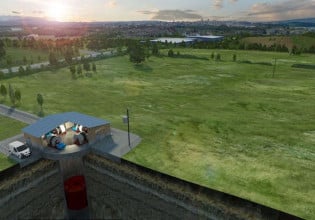EDSA Introduces First MicroGrid Master Controller for Management & Control of Microgrids Using Alternative Energy Sources
EDSA unveiled its Paladin® SmartGrid™ software platform, a new software solution that removes a major obstacle to the widespread use of alternative energy. Paladin SmartGrid is a "master controller" enabling the use of on-premise and distributed energy sources – such as solar, wind, or local co-generation – without jeopardizing the reliability of the legacy utility grid.
Paladin SmartGrid is now nearing final testing at an undisclosed customer site, and is scheduled to be commercially released by the second quarter of 2010 – said to be far ahead of the timeline that industry experts envisioned such vital technology becoming available.
Paladin SmartGrid optimizes energy consumption on site employing multiple energy sources, whether they are focused on a single objective – such as minimizing annual energy cost, carbon footprint, peak load, or public utility consumption – or a combination of objectives that vary by time, costs, energy source reliability, etc.
As organizations increasingly seek to supplement their utility power with on-premise power generation, Paladin SmartGrid: serves as a master controller for intelligent microgrid designs, monitoring and electricity trading (i.e., selling power back into the public grid); monitors the microgrid’s power quality, utilization and capacity in real-time, in order to offer excess capacity to the Smart Grid; monitors all transactions between public electric service and microgrid infrastructure; and maintains rate and pricing information for management of private-public exchange.
For example, if a facility were to install on-premise solar panels, wind turbines, or co-generation capabilities, and use those sources to charge large on-site battery storage – while attempting to use public utility power as sparingly as possible – it becomes increasingly difficult to ensure power system reliability. Since inherently episodic energy sources may be unavailable when needed, a real-time balancing act is essential to ensure energy savings and environmental goals are met, while at the same time, guaranteeing that local-loop-wide power systems reliability is never jeopardized.
"If America is going to be successful in using alternative energy sources to address the fragility of the national power grid, microgrids are an essential part of the solution," said Mark A. Ascolese, Chairman and Chief Executive Officer of EDSA. "Not only do microgrids alleviate the risk of a region-wide power outage on the scale of the 2003 Northeast Blackout, but they enable formerly pure energy consumers to also become energy producers."
"Of course, the real challenge in microgrids is controlling the transition from one energy source, or one energy management system, to another without putting the reliability of the microgrid at risk; power-wise, it is the ultimate high-wire balancing act." Ascolese noted. "This in an area where Paladin SmartGrid is uniquely suited, because it continually applies expert intelligence to both real-time power data and the original design model of a microgrid, so the operator is assured that his power infrastructure is performing precisely as it was designed to, and that any foreseeable changes in operating conditions are already planned for."
"Microgrids won’t do away with central power generation and transmission facilities," he concluded. "Instead, just as desktop computers work in concert with corporate data centers via a secure network, local microgrids will enable a cooperative, distributed, and synergistic energy solution that reduces energy costs, waste, and environmental hazards."






